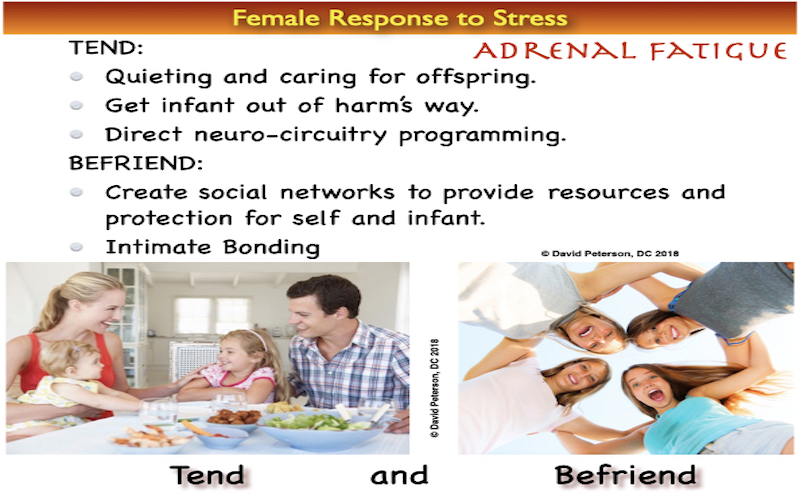When faced with danger, the classic “fight-or-flight” response has long been the go-to explanation for how humans react to stress. But what if this model doesn’t fully capture the experience of half the population? In 2000, Taylor et al. introduced a groundbreaking concept: the tend-and-befriend response, a stress reaction unique to females, rooted in evolutionary biology and driven by a cascade of hormones like oxytocin.1Taylor, S. E., Klein, L. C., Lewis, B. P., Gruenewald, T. L., Gurung, R. A. R, & Updegraff, J. A. (2000). Biobehavioral responses to stress in females: Tend-and-befriend, not fight-or-flight. Psychological Review, 107, 441-429. This response challenges the one-size-fits-all approach to stress and highlights the remarkable ways females ensure survival for themselves and their offspring. Let’s dive into the science and significance of this fascinating mechanism, as explored by Lauren A. McCarthy in her paper, Evolutionary and Biochemical Explanations for a Unique Female Stress Response: Tend-and-Befriend.2McCarthy, M. M. (1995). Estrogen modulation of oxytocin and its relation to behavior. In R. Ivell & J. Russell (Eds.), Oxytocin: Cellular and molecular approaches in medicine and research (pp. 235-242). New York: Plenum.
What are the symptoms of an Abnormal Tend-and-Befriend Response
An abnormal tend-and-befriend response, where women prioritize social connections and nurturing over other stress responses, can manifest as symptoms of stress, anxiety, or depression. This can include heightened irritability, difficulty sleeping, changes in appetite, and weakened immune function. In some cases, individuals may experience social withdrawal, difficulty concentrating, or even suicidal ideation.
Symptoms of Stress and Potential Overlap with Abnormal Tend-and-Befriend:
- Emotional:Irritability, anger, tearfulness, anxiety, worry, hopelessness, fear, difficulty making decisions.
- Cognitive:Racing thoughts, feeling overwhelmed, difficulty concentrating.
- Physical:Headaches, muscle tension, back pain, fatigue, changes in appetite (eating excessively or losing appetite), difficulty sleeping.
- Social:Withdrawing from family and friends, avoiding social situations, difficulty with daily activities.
- Behavioral:Not doing important things, such as work or paying bills, thinking about suicide.
Potential Consequences of an Overly Prominent Tend-and-Befriend Response:
- Burnout:Constant nurturing and social engagement can lead to exhaustion and depletion of resources, especially if boundaries are not maintained.
- Neglect of Self-Needs:Prioritizing others’ needs over one’s own can lead to neglecting physical and emotional well-being.
- Difficulty with Independence:A strong reliance on social support can make it challenging to navigate difficult situations independently.
- Exacerbation of Existing Mental Health Issues:The stress associated with social withdrawal and neglecting self-care can worsen pre-existing anxiety or depression.
Important Considerations:
- Individual Variation:Not all individuals experience stress responses in the same way, and some may naturally lean more towards tending and befriending.
- Context Matters:The appropriateness of a tend-and-befriend response can depend on the specific situation and the individual’s personal history and beliefs.
- Seeking Professional Help:If symptoms of stress, anxiety, or depression are persistent or severe, seeking professional help from a therapist or counselor is recommended.
References
- 1Taylor, S. E., Klein, L. C., Lewis, B. P., Gruenewald, T. L., Gurung, R. A. R, & Updegraff, J. A. (2000). Biobehavioral responses to stress in females: Tend-and-befriend, not fight-or-flight. Psychological Review, 107, 441-429.
- 2McCarthy, M. M. (1995). Estrogen modulation of oxytocin and its relation to behavior. In R. Ivell & J. Russell (Eds.), Oxytocin: Cellular and molecular approaches in medicine and research (pp. 235-242). New York: Plenum.






